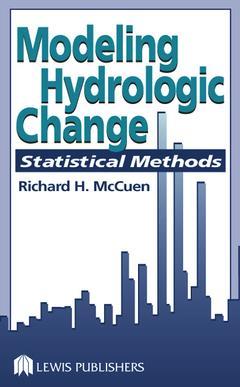Description
Modeling Hydrologic Change
Statistical Methods
Author: McCuen Richard H.
Language: English
Subject for Modeling Hydrologic Change:
Keywords
Annual Maximum; peak; Watershed Change; discharge; Annual Maximum Discharges; random; Peak Discharges; variable; Annual Maximum Series; annual; Null Hypothesis; maximum; Time Series; discharges; Annual Flood Series; watershed; Flood Record; flood; Rejection Probability; series; Annual Maximum Flood Series; Flood Frequency Analysis; Annual Peak Discharges; Annual Maximum Peak Discharges; Weibull Plotting Position Formula; Flood Series; Data Set; Nonsystematic Variation; Test Statistic; Iii Distribution; Smoothed Series; Run Test; Exceedance Probability; Hypothesis Test; Cox Stuart Test
432 p. · 15.6x23.4 cm · Hardback
Description
/li>Contents
/li>Readership
/li>Biography
/li>
Modeling hydrologic changes and predicting their impact on watersheds is a dominant concern for hydrologists and other water resource professionals, civil and environmental engineers, and urban and regional planners. As such changes continue, it becomes more essential to have the most up-to-date tools with which to perform the proper analyses and modeling of the complex ecology, morphology, and physical processes that occur within watersheds. An application-oriented text, Modeling Hydrologic Change: Statistical Methods provides a step-by-step presentation of modeling procedures to help you properly analyze and model real-world data.
The text addresses modeling systems where change has affected data that will be used to calibrate and test models of the system. The use of actual hydrologic data will help you learn how to handle the vagaries of real-world hydrologic-change data. All four elements of the modeling process are discussed: conceptualization, formulation, calibration, and verification. Although the book is oriented towards the statistical aspects of modeling, a strong background in statistics is not required. The statistical and modeling methods discussed here will be of value to all disciplines involved in modeling change. With approximately 100 illustrations, Modeling Hydrologic Change will equip you with an understanding with which to perform the proper analyses and modeling of the complex processes that occur across various disciplines.

